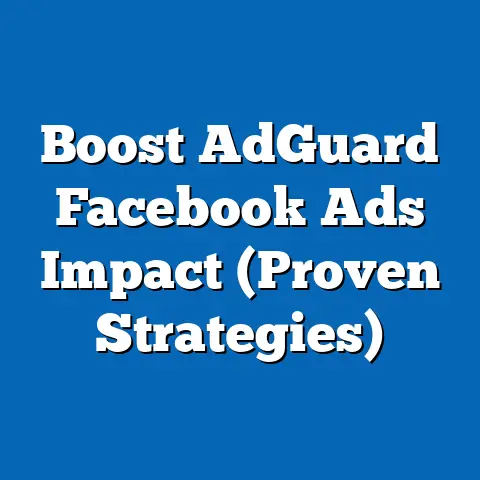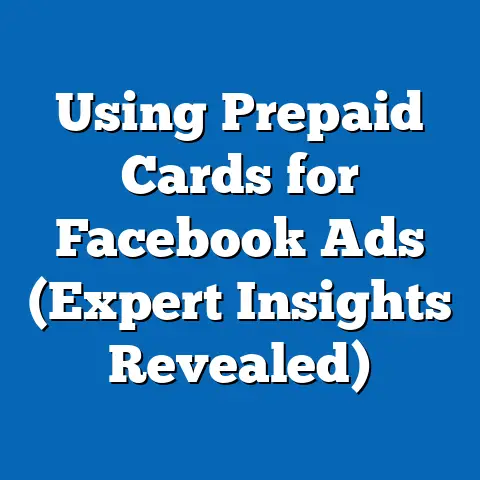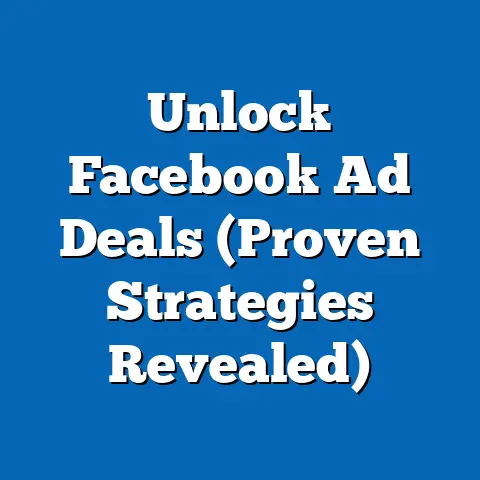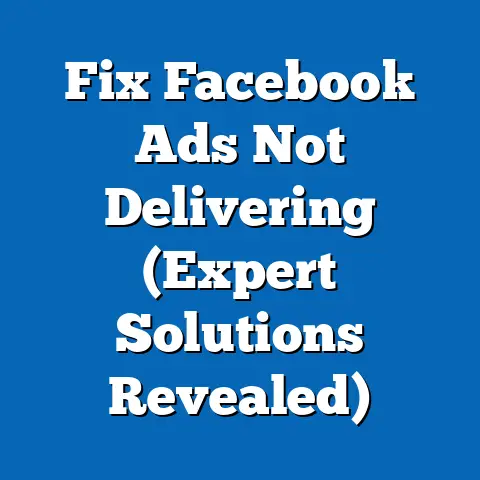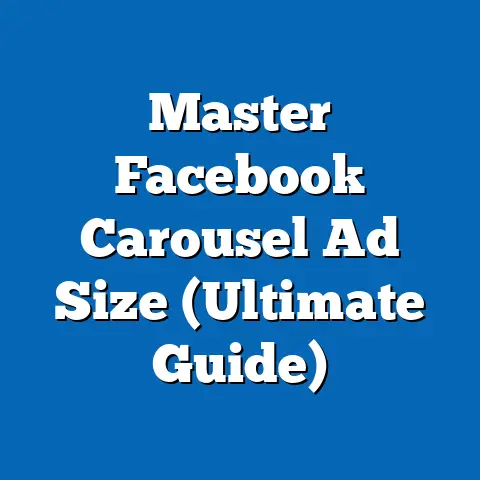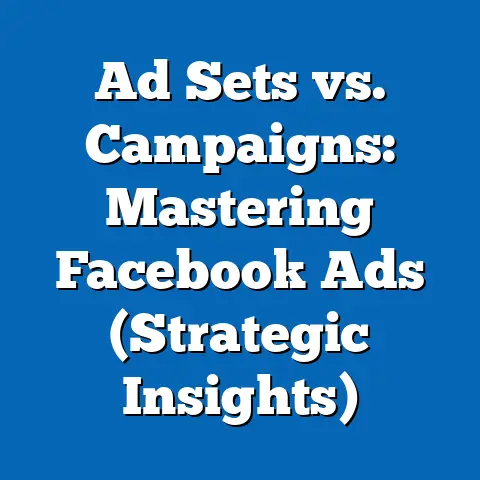Unlocking Collusion Memo Facebook Ads (Proven Strategies)
Do you remember the first time a social media ad caught your eye, perhaps on Facebook, tailored so perfectly to your interests that it felt almost intrusive? For many of us, that moment marked a shift in how we interact with digital spaces, where personal data and targeted advertising collided to create a new frontier of marketing. This article explores the phenomenon of “collusion” in the context of Facebook ads—specifically, the strategic alignment of data, technology, and user behavior to maximize engagement across generations.
Facebook, launched in 2004, emerged as a cultural juggernaut, shaping how different age cohorts connect, communicate, and consume. Its advertising platform, in particular, has become a powerful tool for brands to reach vast audiences with unprecedented precision. But what are the proven strategies behind these ads, and how do they resonate across generational lines?
This comprehensive analysis delves into the defining characteristics of Facebook ad strategies, the historical context of digital marketing, and the societal implications of such targeted approaches. We will examine how these strategies adapt to generational preferences, the technological and cultural factors at play, and the broader impact on privacy, consumer behavior, and societal trust.
Defining Characteristics of Facebook Ad Strategies
At the heart of Facebook’s advertising success lies its ability to leverage user data for hyper-targeted campaigns. Unlike traditional media, where ads were broadcast to broad demographics, Facebook ads utilize algorithms that analyze user behavior, interests, and demographics to deliver personalized content. This “collusion”—a term used here to describe the intricate collaboration between platform, advertisers, and user data—has redefined modern marketing.
Key characteristics of these strategies include micro-targeting, where ads are tailored to niche audiences based on specific traits like age, location, or even recent online searches. Another hallmark is the use of dynamic creative optimization, allowing ads to adapt in real-time based on user interactions. Additionally, A/B testing and retargeting ensure that campaigns are continually refined to maximize click-through rates and conversions.
These tactics are not static; they evolve with technological advancements and user expectations. For instance, video ads and interactive formats have surged in popularity, reflecting a shift toward immersive storytelling. Understanding these characteristics is crucial to unpacking how they influence different generations, each with unique digital habits and cultural touchpoints.
Historical Context: The Rise of Digital Marketing and Facebook’s Role
To grasp the significance of Facebook ads, we must rewind to the early 2000s, a period of rapid internet expansion. The dot-com bubble had burst, but the digital landscape was ripe for innovation. Social media platforms like MySpace and Friendster paved the way, but it was Facebook’s 2004 debut that transformed online connectivity into a global phenomenon.
By 2007, Facebook introduced its advertising platform, capitalizing on its growing user base to offer brands a new way to reach consumers. This was a pivotal moment, coinciding with the broader shift from traditional to digital marketing. The 2008 financial crisis further accelerated this transition, as businesses sought cost-effective ways to advertise amidst economic uncertainty.
The historical backdrop of Facebook’s ad evolution also ties into generational milestones. Baby Boomers (born 1946–1964) were adapting to email and early internet use during this period, while Generation X (born 1965–1980) embraced the first wave of social media. Millennials (born 1981–1996), often dubbed “digital natives,” came of age alongside Facebook, making them prime targets for early ad experiments. Meanwhile, Generation Z (born 1997–2012) entered a world where social media ads were ubiquitous, shaping their consumer behavior from the start.
Significant events like the 2016 U.S. presidential election and the Cambridge Analytica scandal in 2018 exposed the darker side of data-driven advertising. These moments highlighted how collusion between data analytics and ad targeting could influence not just purchasing decisions but also political outcomes, raising ethical questions that continue to resonate across generations.
Generational Responses to Facebook Ads: A Comparative Analysis
Each generation interacts with Facebook ads through a unique lens shaped by their upbringing, technological exposure, and cultural values. Below, we compare how Baby Boomers, Generation X, Millennials, and Generation Z engage with these strategies, emphasizing diversity within cohorts and avoiding overgeneralizations.
Baby Boomers (1946–1964):
For many Boomers, social media is a relatively new frontier, adopted later in life to stay connected with family or explore hobbies. Their engagement with Facebook ads often centers on nostalgia-driven content or practical products like health supplements. However, they tend to be more skeptical of online privacy, influenced by historical events like Watergate and a general wariness of technology.
Generation X (1965–1980):
Gen X, often caught between analog and digital worlds, displays a pragmatic approach to ads. They value authenticity and are drawn to campaigns that emphasize quality or value for money. Having witnessed the internet’s evolution, they are more likely to question data usage, though many still engage with targeted ads for convenience.
Millennials (1981–1996):
Millennials, who grew up alongside social media, are highly receptive to Facebook ads, especially those tied to social causes or lifestyle branding. They prioritize experiences over possessions, making experiential marketing a proven strategy for this group. Yet, their awareness of data privacy issues—spurred by events like the Snowden leaks—means they demand transparency from advertisers.
Generation Z (1997–2012):
Gen Z, true digital natives, approaches ads with a mix of savvy and skepticism. They are drawn to short-form, visually engaging content like Stories or influencer partnerships, reflecting their preference for authenticity over polished branding. Their constant exposure to ads also makes them adept at filtering out irrelevant content, posing a challenge for marketers.
Across these generations, the effectiveness of ad strategies hinges on cultural relevance and technological adaptation. While Boomers may respond to email-linked ads, Gen Z demands seamless mobile experiences. Recognizing this diversity prevents marketers from relying on one-size-fits-all approaches.
Technological, Economic, Social, and Cultural Factors
Several factors underpin the success of Facebook ad strategies and their generational impact. Technologically, the platform’s algorithms and machine learning capabilities enable unparalleled targeting precision. The rise of mobile usage, with over 98% of Facebook’s ad revenue coming from mobile devices as of 2022 (Statista), underscores how tech trends shape ad delivery.
Economically, the low cost of entry for Facebook ads compared to traditional media has democratized marketing, allowing small businesses to compete with corporate giants. This shift has generational implications—Millennials and Gen Z, often entrepreneurial, leverage these tools to build personal brands, while older generations may see them as a cost-effective way to reach local markets.
Socially, the emphasis on community and connection influences ad content. Campaigns that foster a sense of belonging or social impact resonate strongly, particularly with younger audiences. For instance, ads supporting sustainability often appeal to Gen Z’s values, shaped by growing up amid climate change discussions.
Culturally, generational touchpoints dictate ad messaging. Nostalgia works for Boomers and Gen X, evoking memories of past decades, while memes and pop culture references captivate Millennials and Gen Z. These cultural nuances, paired with data-driven targeting, exemplify the collusion at the core of effective Facebook ads.
Proven Strategies for Generational Engagement on Facebook
Drawing from quantitative data and qualitative insights, several strategies stand out as particularly effective for engaging diverse generations on Facebook. These approaches balance creativity with analytics, ensuring resonance across age groups.
-
Personalization Through Data Insights:
Studies show that personalized ads can increase click-through rates by up to 50% (eMarketer, 2021). Tailoring content to user preferences—whether it’s recommending gardening tools to Boomers or eco-friendly products to Gen Z—enhances relevance. However, transparency about data usage is critical to maintain trust. -
Interactive and Visual Content:
Video ads and interactive formats like polls or quizzes drive higher engagement, especially among younger users. According to Hootsuite (2022), video content garners 59% more engagement than static images on Facebook. This aligns with Gen Z and Millennial preferences for dynamic storytelling. -
Influencer Collaborations:
Partnering with influencers builds credibility, particularly with Gen Z, who trust peer recommendations over traditional ads. A 2021 survey by Morning Consult found that 54% of Gen Z users made purchases based on influencer endorsements, compared to just 13% of Boomers. -
Retargeting and Behavioral Triggers:
Retargeting users who have interacted with a brand—such as abandoning a cart—boosts conversion rates by 26% (Criteo, 2020). This strategy works across generations, reminding Boomers of forgotten purchases and nudging Millennials to complete impulse buys. -
Ethical Messaging and Social Responsibility:
Campaigns highlighting social or environmental impact resonate strongly, especially with younger cohorts. For instance, brands like Patagonia see higher engagement from Millennials and Gen Z when ads focus on sustainability, reflecting a broader cultural shift toward conscious consumerism.
These strategies, while effective, must be adapted to generational nuances. A one-dimensional approach risks alienating segments of the audience, underscoring the need for continuous testing and feedback.
Societal Implications: Privacy, Trust, and Consumer Behavior
The collusion inherent in Facebook ad strategies raises significant societal questions, particularly around privacy and trust. The 2018 Cambridge Analytica scandal, where user data was exploited for political ads, eroded public confidence, with a Pew Research Center survey (2019) finding that 74% of Americans felt uneasy about how their data was used.
Generational attitudes toward privacy vary. Boomers and Gen X often express greater concern, shaped by a pre-digital worldview, while Millennials and Gen Z, though aware of risks, are more resigned to data sharing as a trade-off for convenience. This resignation, however, does not equate to acceptance—64% of Gen Z users report adjusting privacy settings to limit ad targeting (Pew, 2021).
Consumer behavior has also shifted. Hyper-targeted ads can create “filter bubbles,” reinforcing existing beliefs and limiting exposure to diverse perspectives. This phenomenon, noted by scholars like Eli Pariser, impacts societal discourse, as generations become siloed in echo chambers—a concern amplified by political ad controversies.
In the workplace, these strategies influence hiring and branding. Companies use Facebook ads to attract talent, tailoring messages to generational values like work-life balance for Millennials or career growth for Gen Z. However, over-reliance on targeted ads can exclude older workers, raising questions of ageism and equity.
Culturally, the normalization of constant advertising shapes generational identity. Gen Z, bombarded by ads from childhood, develops a critical lens, often valuing authenticity over persuasion. Meanwhile, older generations grapple with adapting to a world where personal data fuels commerce, highlighting a broader tension between innovation and ethics.
Expert Perspectives and Statistical Insights
Experts in digital marketing and sociology offer valuable context on these trends. Dr. Karen Nelson-Field, a media researcher, argues that attention metrics—not just clicks—should guide ad strategies, as generational attention spans vary widely (Nelson-Field, 2020). For instance, Gen Z’s preference for quick content aligns with shorter ad formats, while Boomers engage more with longer, narrative-driven ads.
Statistically, Facebook’s ad reach remains staggering, with 2.9 billion monthly active users as of 2023 (Meta Reports). Ad revenue hit $114.9 billion in 2022, reflecting its economic dominance (Statista). Yet, engagement rates differ by age—Gen Z users spend an average of 30 minutes daily on the platform, compared to 45 minutes for Millennials (eMarketer, 2023), signaling shifting priorities.
These insights underscore a critical point: while data-driven collusion fuels ad success, it must be balanced with ethical considerations. Over-targeting risks backlash, as seen in declining trust metrics post-2018 scandals. Experts like Shoshana Zuboff, author of The Age of Surveillance Capitalism, warn that unchecked data practices could deepen societal divides across generations.
Forward-Looking Insights: The Future of Facebook Ads and Generational Dynamics
As we look ahead, the landscape of Facebook ads will likely evolve with emerging technologies like augmented reality and AI-driven personalization. These innovations promise even greater targeting precision, but they also amplify privacy concerns—a tension that will shape generational responses.
For Baby Boomers, aging into retirement may shift ad focus toward healthcare and leisure, while Gen X faces midlife priorities like financial planning. Millennials, entering peak earning years, will remain a key demographic, though their demand for authenticity may push brands toward greater transparency. Gen Z, meanwhile, will drive trends in short-form content and ethical branding, challenging advertisers to keep pace with their values.
The rise of newer platforms like TikTok also poses a threat to Facebook’s dominance, particularly among younger users. Meta’s response—integrating Reels and other features—suggests a pivot toward adaptability, but uncertainties remain. Will older generations migrate to new platforms, or will Facebook retain its cross-generational appeal through strategic evolution?
Societally, the balance between innovation and regulation will be pivotal. Governments worldwide are scrutinizing data practices, with laws like the EU’s GDPR setting precedents for user protection. How these policies impact ad strategies—and generational trust—remains an open question.
Conclusion: Navigating the Collusion Conundrum
Facebook ads, through their intricate collusion of data, technology, and user behavior, have redefined marketing for a multi-generational audience. From personalized campaigns to interactive content, proven strategies demonstrate the power of tailored engagement, resonating differently across Baby Boomers, Gen X, Millennials, and Gen Z. Yet, this power comes with responsibility—to address privacy concerns, foster trust, and mitigate societal silos.
Historically, the rise of digital marketing reflects broader shifts in technology and culture, shaped by events like the 2008 crisis and data scandals. Looking forward, the interplay of innovation and ethics will determine whether Facebook ads remain a unifying tool or a divisive force. As we navigate this complex landscape, one truth endures: understanding generational dynamics is not just a marketing imperative but a societal one, urging us to balance connection with caution in an ever-digital world.

